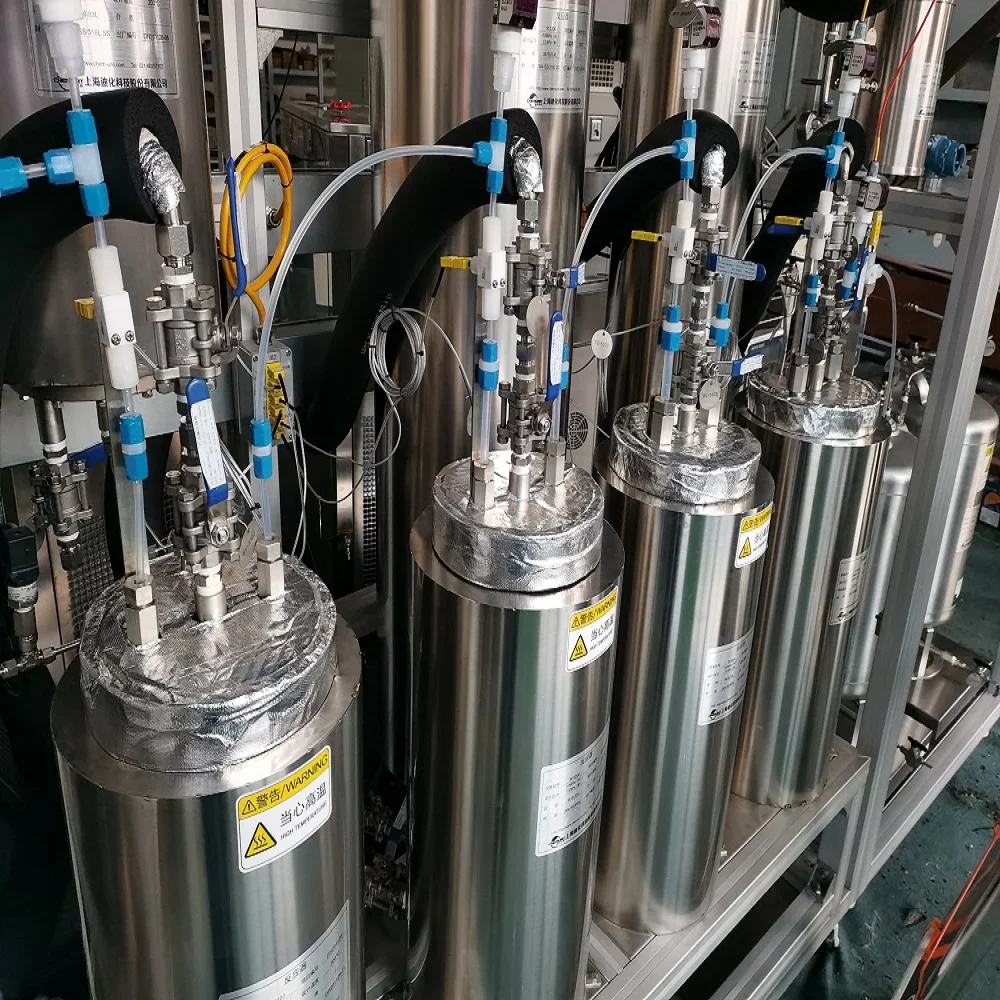Continuous flow unit systems are essential in various industrial applications, particularly in chemical processing, water heating, and energy management. Shanghai Chem-Unit Technologies Co., Ltd. specializes in producing these systems, which are designed for efficiency and reliability. This blog post will delve into the key components of a continuous flow unit system, explaining their functions and importance in ensuring optimal performance.
What is a Continuous Flow Unit System?
A continuous flow unit system is designed to process materials or fluids in a steady stream without interruptions. Unlike batch systems, which process materials in discrete quantities, continuous flow systems provide a constant output, making them ideal for applications that require uninterrupted operation. These systems are widely used in industries such as pharmaceuticals, food processing, and chemical manufacturing.

Key Components of a Continuous Flow Unit System
1. Feed System
The feed system is responsible for introducing raw materials or fluids into the continuous flow unit. This component can include various mechanisms such as pumps, conveyors, or gravity feed systems, depending on the nature of the material being processed.
Pumps: Used to move liquids or slurries into the system at a controlled rate.
Conveyors: Commonly used for solid materials to ensure a steady supply.
Gravity Feed: Utilizes gravitational force to transport materials into the system.
2. Heating/Cooling Units
In many applications, temperature control is critical for maintaining product quality and process efficiency. Heating and cooling units are integrated into continuous flow systems to regulate temperature as needed.
Heat Exchangers: These devices transfer heat between two or more fluids without mixing them. They are essential for heating or cooling the material as it flows through the system.
Chillers: Used to lower the temperature of fluids in processes that require cooling.
3. Reactor Vessel
The reactor vessel is where the actual processing occurs. It is designed to facilitate chemical reactions or physical changes in the material being processed.
Design Considerations: The reactor must be constructed from materials that can withstand the operational pressures and temperatures while preventing contamination.
Agitation Systems: Many reactors include agitation mechanisms to ensure uniform mixing of reactants.
4. Control System
A robust control system is vital for monitoring and managing the continuous flow unit's operations. This component ensures that all processes run smoothly and efficiently.
Sensors: Various sensors monitor parameters such as temperature, pressure, and flow rate, providing real-time data to operators.
Programmable Logic Controllers (PLCs): These devices automate processes by controlling machinery based on inputs from sensors.
Human-Machine Interface (HMI): Operators use HMIs to interact with the control system, allowing them to adjust settings and monitor performance.
5. Separation Units
In many continuous flow processes, separating products from by-products or impurities is necessary. Separation units can include filters, centrifuges, or settling tanks.
Filters: Remove solid particles from liquids.
Centrifuges: Use centrifugal force to separate components based on density differences.
Settling Tanks: Allow solids to settle at the bottom of a tank for easy removal.
6. Storage Tanks
Storage tanks are used to hold raw materials before they enter the system or to store finished products after processing.
Material Selection: Tanks must be made from materials compatible with the stored substances to prevent reactions or contamination.
Capacity Planning: The size of storage tanks should align with production rates and demand forecasts.
7. Piping and Valves
Piping systems transport materials between different components of the continuous flow unit. Valves control the flow rate and direction of materials within the system.
Material Selection: Pipes must be durable and resistant to corrosion or wear caused by the transported substances.
Valve Types: Different types of valves (e.g., ball valves, gate valves) serve specific functions in controlling flow.
Advantages of Continuous Flow Unit Systems
Understanding the key components of a continuous flow unit system highlights its advantages:
Efficiency: Continuous operation reduces downtime associated with batch processing.
Consistency: Provides uniform product quality due to steady processing conditions.
Scalability: Easily scaled up or down based on production needs without significant reconfiguration.
Cost Savings: Reduces labor costs associated with manual handling and batch processing.
Applications of Continuous Flow Unit Systems
Continuous flow unit systems find applications across various industries:
Chemical Manufacturing: Used for reactions that require precise control over temperature and pressure.
Food Processing: Employ during the pasteurization process, continuous heating is essential.
Water treatment: The process of filtering and purifying municipal water supplies.
Conclusion
Continuous flow unit systems are an integral part of modern manufacturing processes across multiple industries. By understanding their key components – feed systems, heating/cooling units, reaction vessels, control systems, separation units, storage tanks, and piping/valves – manufacturers can optimize their operations to improve efficiency and quality. Shanghai Chemical Unit Technology Co., Ltd. plays a vital role in advancing these technologies, ensuring that the industry can meet growing demands while maintaining high standards of safety and reliability.
By investing in continuous flow technology, companies can increase productivity, reduce costs, and improve overall product quality – advantages that are critical in today’s competitive environment. As the industry continues to evolve, understanding these key components remains essential to realizing the full potential of continuous flow unit systems.
Exploring the Benefits of Skid-Mounted Units in Industrial Applications
